Sauna vs steam room, or dry heat vs moist heat? This guide analyzes the pros and cons of each so you can decide which works best for you.
So, you are looking to have a little piece of luxury in your own home? Or you would like to visit a day spa that has both a sauna and a steam room?
Sauna vs steam room, or dry heat vs moist heat, is a never-ending debate, with both types offering benefits. Some prefer the dry heat in a sauna, while others prefer the humidity in a steam room.
In this article, we’ll take a closer look at the main differences between dry saunas and steam saunas.
Differences Between Saunas and Steam Rooms
Saunas and steam rooms, aren’t they the same thing?
Well, not really.
Saunas and steam rooms can have a similar therapeutic effect on your body, but there are some fundamental differences between the two that we should be aware of.
So, let’s dive a little deeper into saunas and steam rooms and analyze the key differences.
1. Dry Heat vs Moist Heat
The number one difference between saunas and steam rooms is humidity.
The heat generated in a sauna is created by a heater that heats up a pile of sauna rocks. These rocks heat up the air in the room, but it is a very dry type of heat. This feels a bit like when you sit in front of a campfire.
If it gets too dry, you can create some humidity by pouring water over the hot rocks, creating steam in the air, but this is only temporary.
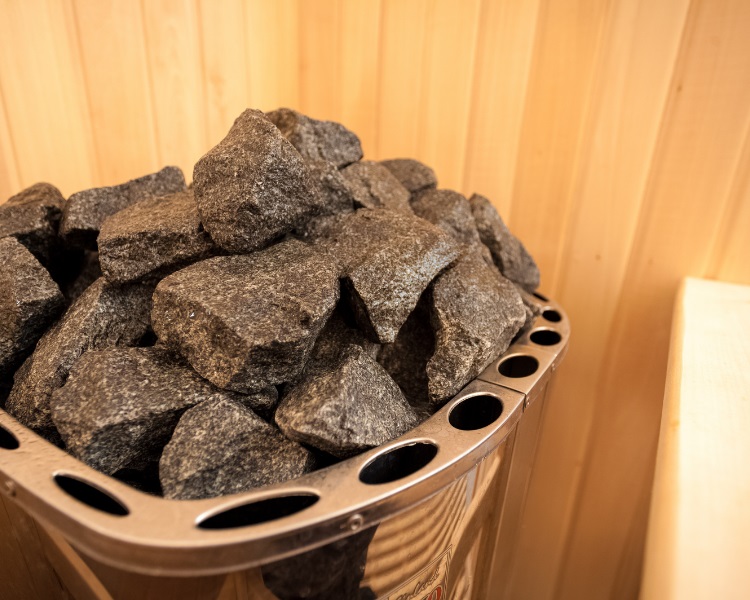
Saunas will often have a vent to bring in fresh air and release the humid air outside, keeping the humidity of the sauna relatively low.
Steam rooms, on the other hand, are heated up by a machine called a steam generator. This generator boils water, turning it into steam, and continually releases it into the room.
To get the humidity level to reach 100%, steam rooms are typically kept airtight.
2. Temperature
The temperature in a sauna can vary, depending on the type of sauna you are using.
Saunas are typically hotter than steam rooms, as the lack of humidity means your body can withstand higher temperatures.
An average sauna may reach between 160 to 200 degrees Fahrenheit, with the humidity levels ranging from 5 to 30 percent.
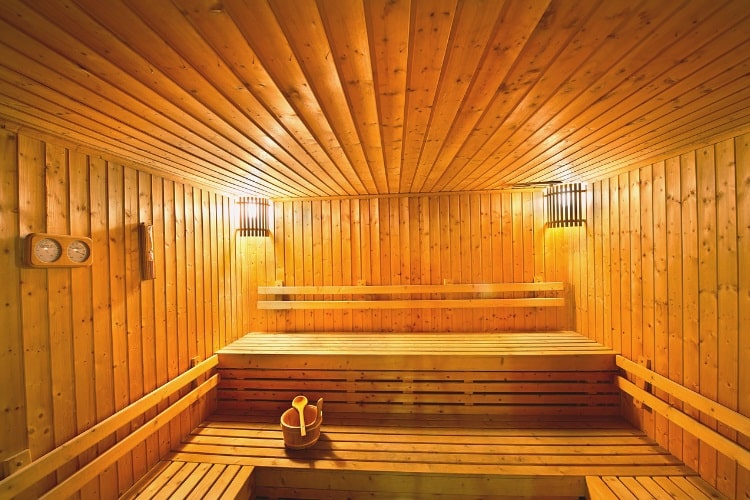
Steam rooms max out at about 110 to 120 degrees, but with the added effect of 100% humidity that keeps your sweat from evaporating, you will actually feel much hotter.
Both saunas and steam rooms will have multiple levels for sitting, and the higher up you sit, the warmer you will feel (as hot air always rises).
3. Seating Arrangements
As mentioned above, the layouts of a steam room and a sauna are pretty similar, but the materials used to build them are very different.
Saunas are made almost entirely of wood; spruce, pine, and cedar are popular choices. These are commonly found hardwoods in Nordic countries where saunas were first invented.
Wood is able to absorb the excess humidity in the air, keeping the environment nice and dry so that higher temperatures can be reached.
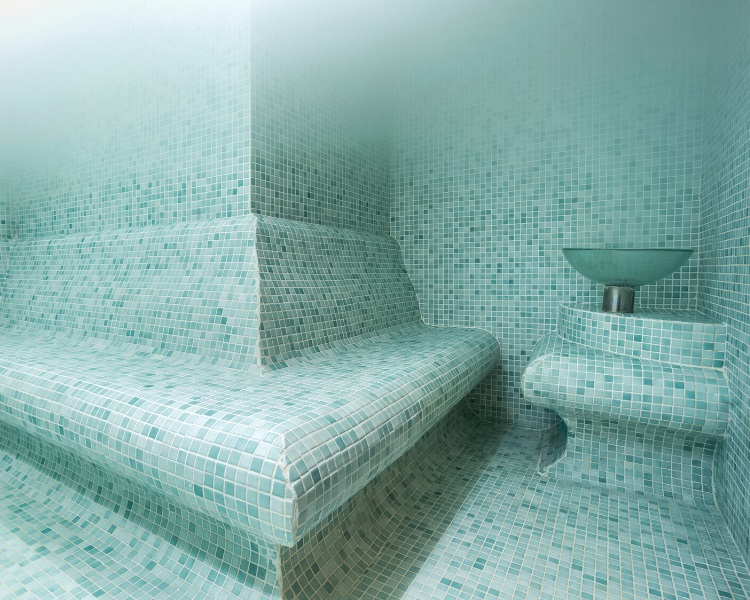
Steam rooms, on the other hand, need to keep the humidity in the air.
Therefore, they are often made from tiles, glass, and plastic, as these materials do not absorb moisture.
4. Cleaning
Steam rooms are typically much easier to clean.
This is great because the intense humidity can quickly lead to mold if not cleaned and sterilized regularly. This may be why steam rooms are usually the more popular choice in public gyms.
In the long term, wood is more complicated to keep clean and will need to be replaced at some point.
Sauna or Steam Room: Which Is Better For You?
Now that you know what the differences are, it’s time to decide which of the two is best for you.
Both saunas and steam rooms will have the same therapeutic relaxing effect on your body by exposing it to high heat, relieving muscle tension and improving circulation.
By encouraging your body to sweat, your pores will also open up and assist with cleansing your skin.
Let’s consider a few factors to help decide which of the two you prefer to use, the sauna or the steam room.
1. Heat Tolerance
Whether you decide to go for a sauna or a steam room will depend mostly on your heat tolerance.

Saunas are great if you want much higher temperatures, but it will be a dry heat that may be far more bearable for many people.
People who have arthritis or joint pain may find a sauna more enjoyable than a steam room, as the humidity may cause their condition to flare up and cause pain.
2. Health Considerations
Steam rooms, in turn, may be more comfortable for people with respiratory problems such as asthma.
The dry heat found in a sauna can also induce coughing and discomfort for those with pre-existing conditions. It may also prove more effective if you are suffering from a cold or a sinus infection.
3. Skin
The humidity of a steam room is usually better for your skin.
This is because the dry heat of a sauna can be very dehydrating and irritable for those with skin conditions such as eczema.
4. Weight Loss
There is a prevalent myth that spending time in a sauna or steam room is great for weight loss.
You may well lose some weight after a session, but keep in mind that this will mostly be just water weight you have lost from all your sweating!
5. Maintenance
You may find a sauna easier to keep clean and sterile due to the lack of humidity, unlike a steam room, which will always need to be thoroughly cleaned to prevent mold growth.

You will, however, need to stain and maintain the wood in a sauna, staining it roughly every 6-12 months with a protective heat-resistant oil or sealant.
Pest control is another consideration for a sauna, as the warm, dry conditions may attract critters like cockroaches and mice who are looking for a warm hiding place.
Final Thoughts
The dry sauna or the steam sauna; this will always remain a point of discussion, and different people will always have different opinions and preferences. And that’s just fine.
In my opinion, both are good, and I don’t prefer one over the other. I am lucky in the sense that I can handle dry heat and moist heat very well, but I do have a preference depending on the time of day. A sauna works best for me when I feel that I need to relax or unwind after a hectic day.
A steam room works best for me when I don’t have time for a workout, but I do want to quickly get my heart rate up. The moist heat in a steam room usually has that effect on me.
Hopefully, this summary has given you an idea of the differences between saunas and steam rooms. Do what’s best for you and enjoy the sauna lifestyle.

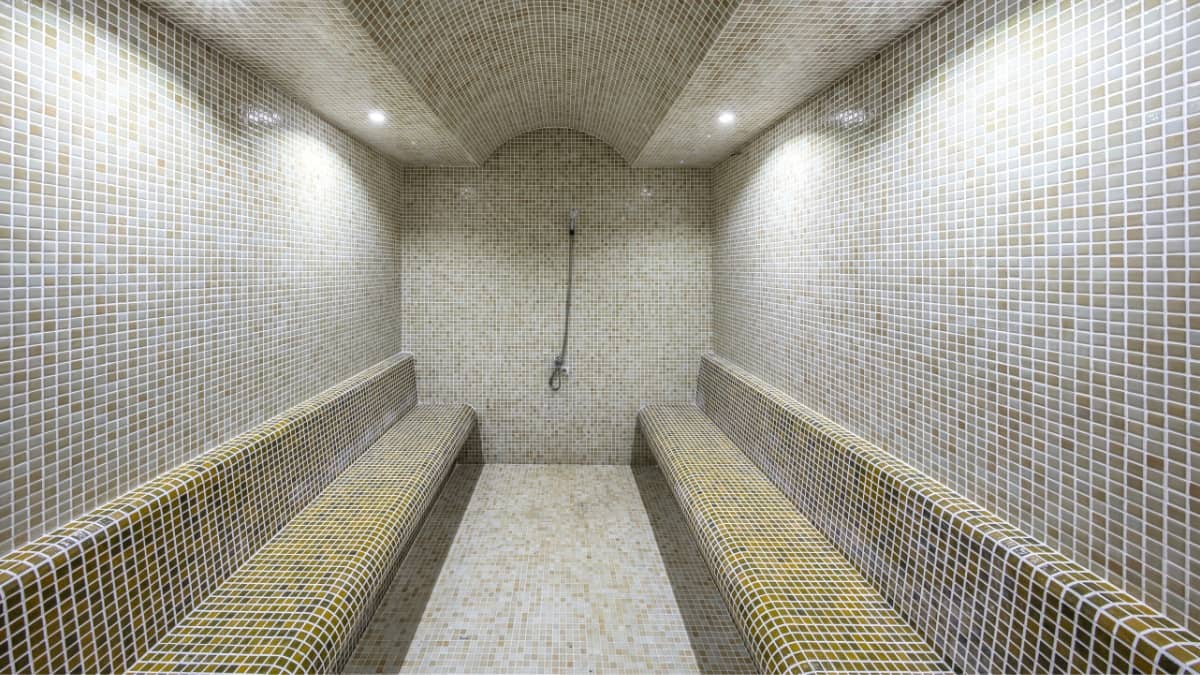

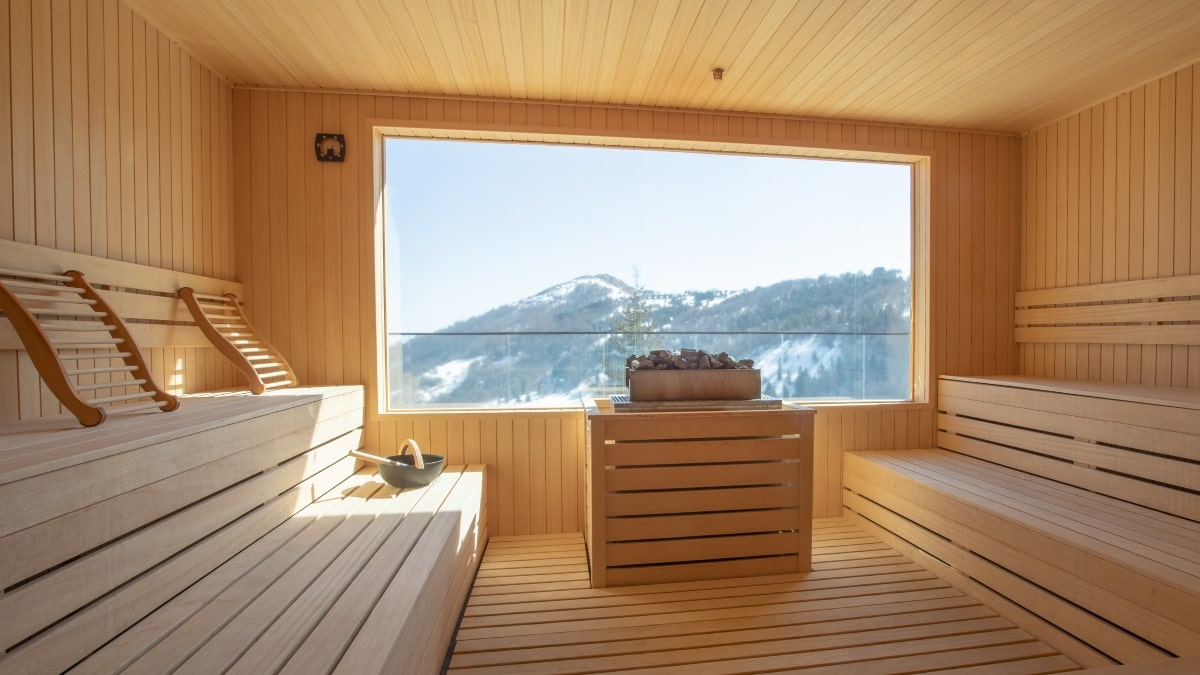


You didn’t mention costs. Would have been nice to discuss how much each type would set me back. Otherwise, good article!